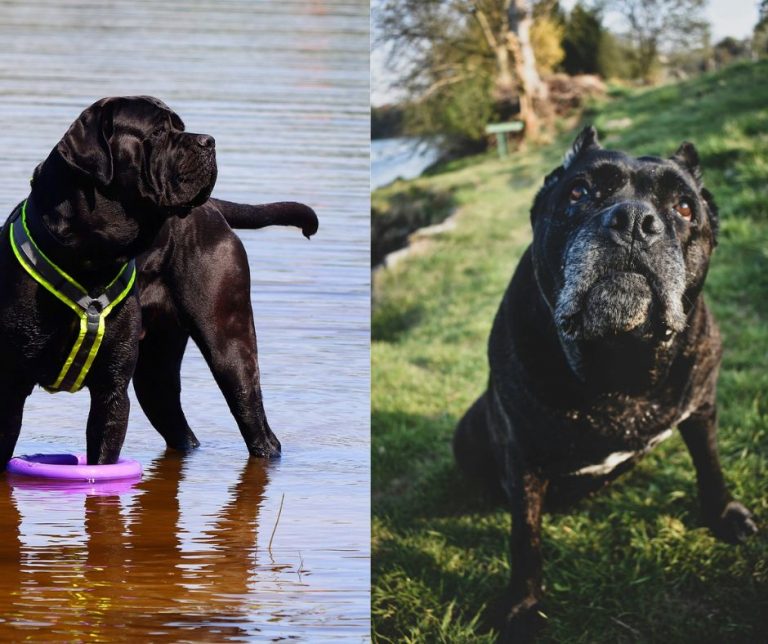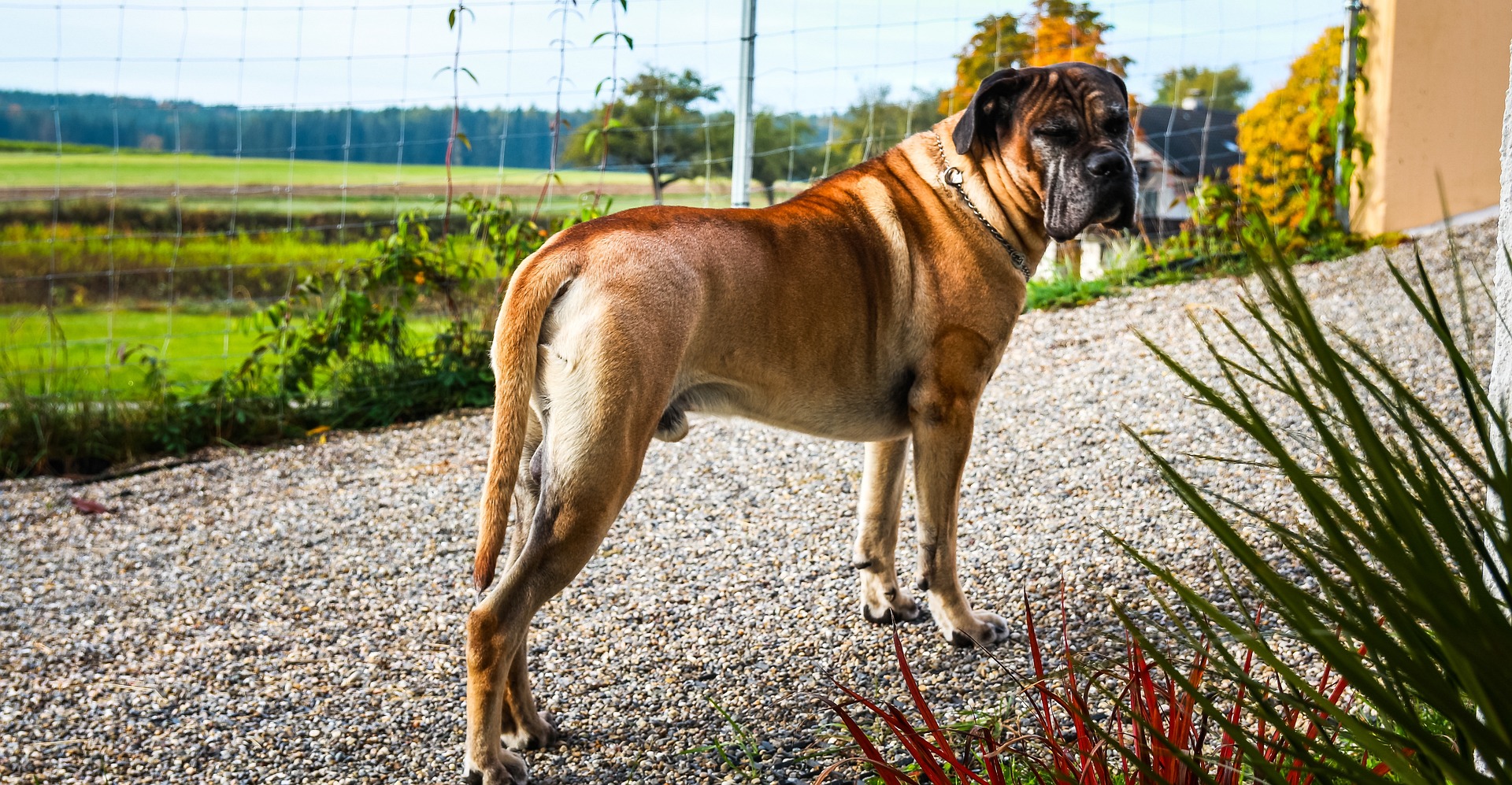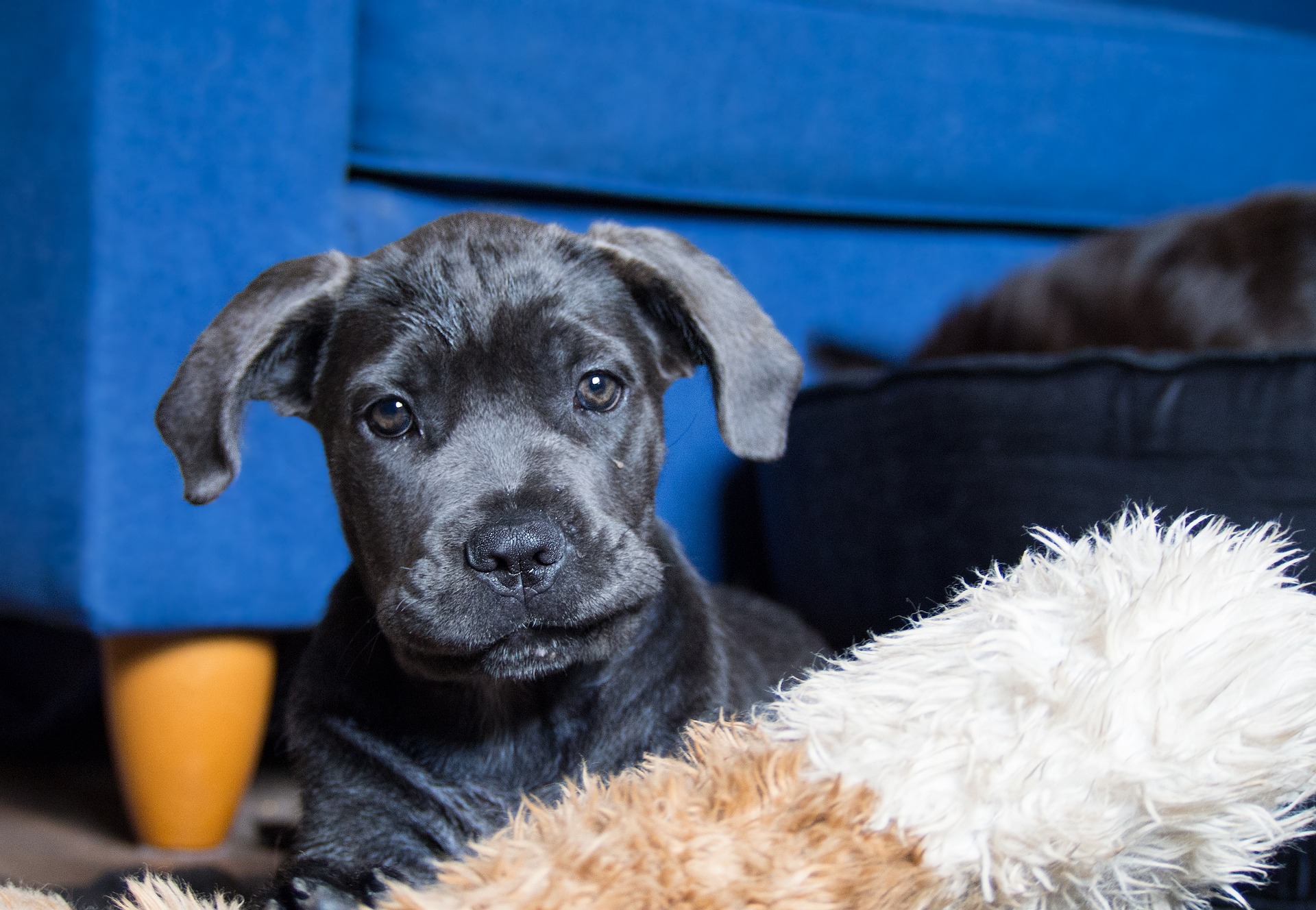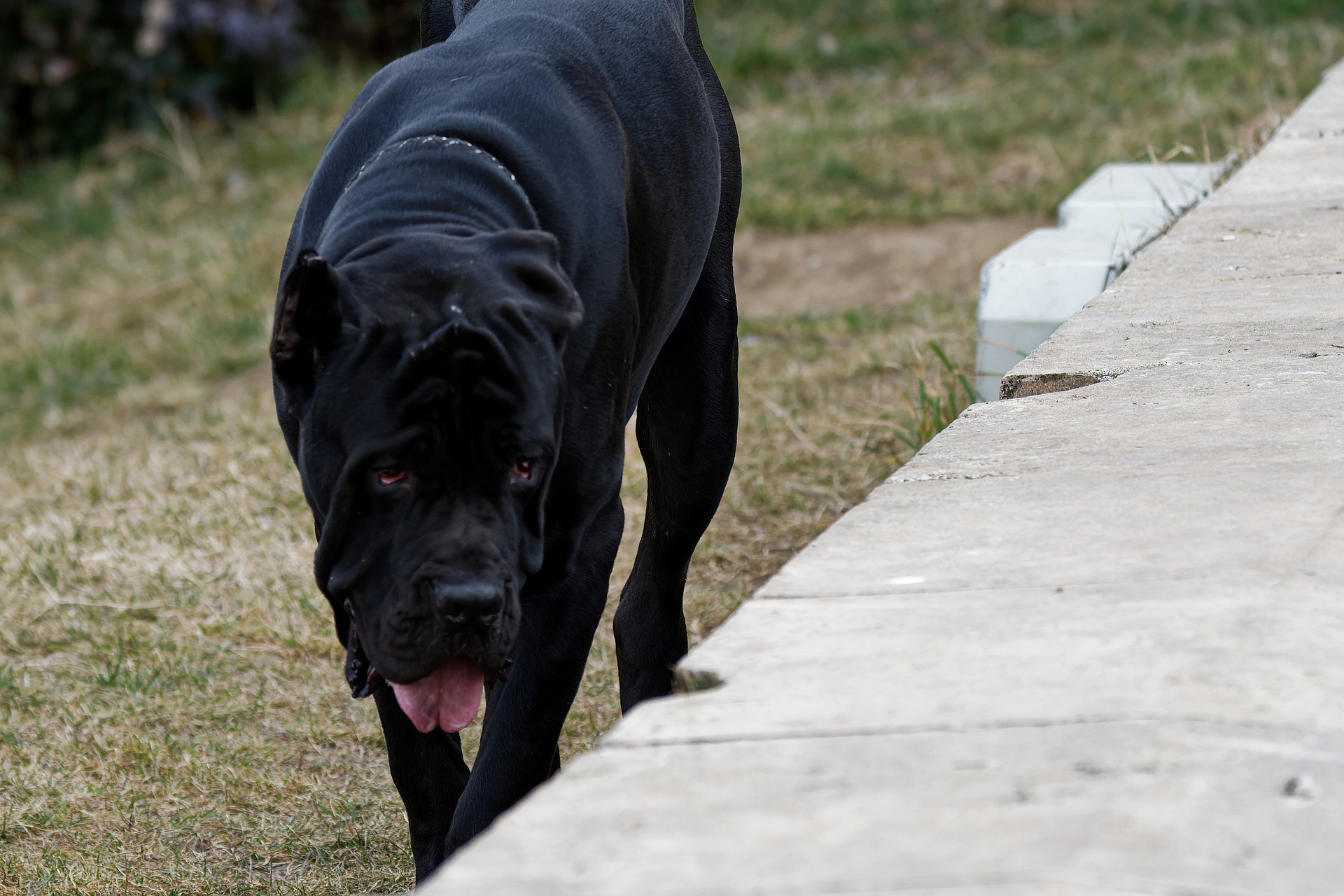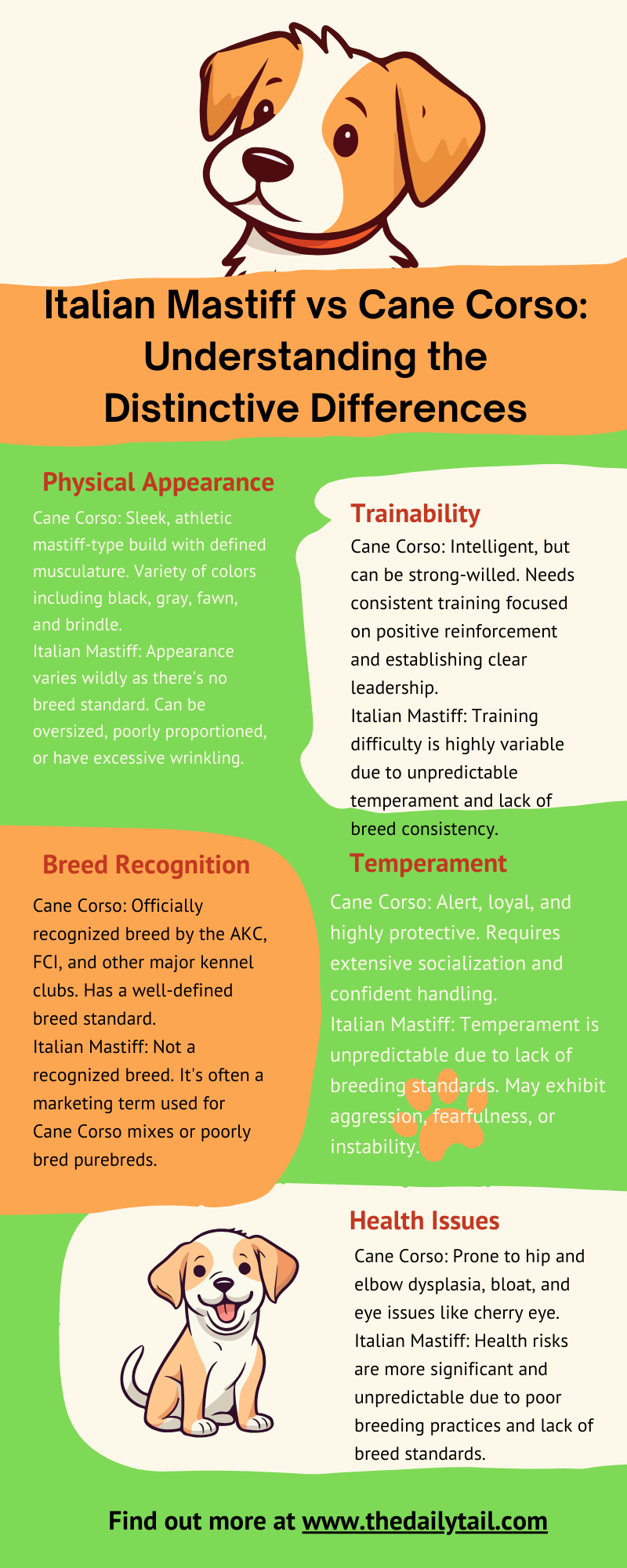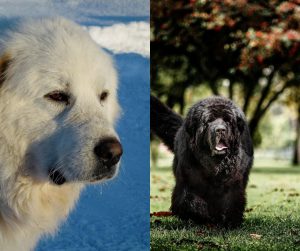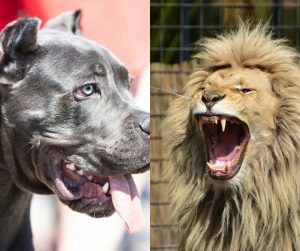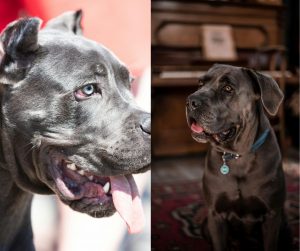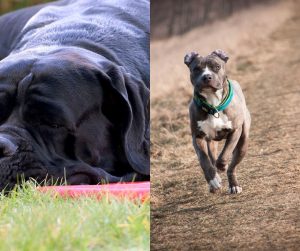When considering the addition of a large canine to the family, the Italian Mastiff and the Cane Corso often come to mind. Both breeds boast an impressive lineage rooted in robust guard dog roles, and it’s no wonder they’re frequently compared. Their shared ancestor, the ancient Roman Molossus, is the foundation of their similarities. However, despite their common heritage, these two breeds diverge in distinct ways that cater to varied preferences and lifestyles of potential dog owners.
On one hand, the Italian Mastiff, also known as the Neapolitan Mastiff, garners attention for its massive size and loose, wrinkled skin giving it a distinctive appearance. On the other hand, the Cane Corso, sometimes referred to as the Italian Mastiff as well, exhibits a more athletic build, perfectly suited for agility and endurance activities.
As dog enthusiasts dive into the world of these majestic breeds, they uncover more than just physical distinctions; temperament, care requirements, and socialization needs are among the many factors that differentiate the laid-back demeanor of the Mastiff from the more active and alert personality of the Cane Corso.
Having lived with powerful guardians, I understand the confusion between the Cane Corso and the ‘Italian Mastiff’. Let’s unravel their differences and why only one is a recognized breed. Let’s take a deeper look into the Italian Mastiff vs Cane Corso dog breed comparison.
Key Takeaways
- The Italian Mastiff and Cane Corso have unique attributes despite a shared lineage
- Distinctions between the breeds include their temperament, size, and activity needs
- Selecting between the two breeds depends on an owner’s lifestyle and the dog’s socialization and care requirements
Breed Origins and History
The Cane Corso and the Italian Mastiff share a rich and intertwined history that dates back to Ancient Rome. These breeds were regarded as descendants of the Molossus, a canine that the Romans highly prized for its size and strength. The Cane Corso was historically utilized in battle and as a personal guard dog, showcasing its bravery alongside Roman soldiers and even gladiators.
- Ancient Rome: The arena for these breeds’ development, where they served as war dogs and guardians
- Molossus: The presumed ancestor, contributing to their robust build
- Gladiators and Julius Caesar: Figures that reflect the might and status these dogs held in Roman society
The breeds were not only effective in battle but also valuable as hunters and farm workers back home. They herded livestock and protected properties from intruders, encapsulating the essence of a versatile working dog.
As time ebbed, the breed history unfolded differently for each. The Cane Corso, which translates to ‘guardian dog’ from Italian, faced a decline post World War II, almost reaching the brink of extinction. But thanks to enthusiasts in the mid-to-late 20th century, the Cane Corso was revitalized and recognized by the American Kennel Club (AKC) in 2010.
| Breed Attribute | Cane Corso | Italian Mastiff |
|---|---|---|
| Recognition | AKC in 2010 | Known as Cane Corso in the AKC |
| Purpose | War, hunting, guarding, herd working | Same as Cane Corso (synonymous terms) |
| Threat of Extinction | Nearly extinct post-WWII | Same risk, resurgence with Cane Corso |
Today, they stand as majestic emblems of their heritage, powerful yet gentle with those they protect, continuing a legacy that has marched through history alongside humankind.
Physical Characteristics
When comparing Italian Mastiff vs Cane Corso, also known as the English Mastiff, one will notice distinct physical traits that set them apart. They’re both powerful and large breeds, but their individual features like size, coat, and overall appearance highlight their unique characteristics.
Size and Weight
The Cane Corso is slightly more compact with males generally reaching 24 to 28 inches in height at the shoulder and females typically up to 26 inches. They weigh a substantial 90 to 130 pounds, showcasing their muscular nature. Conversely, the Italian Mastiff presents a more massive frame. Male and female Italian Mastiffs can stand between 24 and 26 inches at the shoulder, but they tend to be heftier, with weights that can soar well above the 130-pound mark, making them one of the most massive of the dog breeds.
Coat and Color
Both breeds sport a short coat, but the texture and coloring can vary. The Cane Corso’s coat is often described as coarse, and they wear a variety of colors like black, fawn, brindle, and gray, often with a striking mask on their face. The Italian Mastiff’s coat is also short, but they are typically cooler to the touch and can have a slightly fluffier appearance. Their colors can range similar to the Corso’s, with the addition of the English Mastiff’s distinguishing fawn and brindle with a darker mask that accents their noble expression.
Appearance Differences
While both breeds display a muscular build and a powerful stance, the Cane Corso’s overall appearance is that of an athlete – lithe, strong, and ready for action. Their structured frame contributes to a sleek and agile appearance. The Italian Mastiff, by contrast, appears more massive and imposing, with a body built for strength rather than agility. They have a broader chest and a more prominent heft, contributing to a visual presence that exudes power and stability. These visual differences can be subtle at a glance, but are key markers that differentiate the two breeds.
Temperament and Personality
When choosing between the Italian Mastiff and the Cane Corso, understanding their temperaments and personalities is crucial. These breeds are known for their intelligence, loyalty, and protective nature, making them well-suited as family pets and guard dogs. Some other guard dogs in the same category include Presa Canario and Dogo Argentino.
General Disposition
Cane Corso:
- Intelligence: Highly intelligent and eager to learn
- Energy Level: Very energetic, requiring regular exercise
- Confidence: Confident and aware of their surroundings
- Stubbornness: Can be headstrong, requiring a firm and consistent training approach
Italian Mastiff:
- Temperament: Generally calm and composed
- Loyalty: Devoted to their family
- Activity: Less active than the Cane Corso, still needs daily exercise
- Gentleness: Known to be gentle, particularly with family members
Behavior With Families and Pets
Cane Corso:
- Family-Friendly: Yes, especially with early training and socialization
- Children: Protective of kids, but their size and energy level necessitate supervision
- Other Pets: May be pet-friendly with proper introduction and training
Italian Mastiff:
- Family Interaction: Sweet and affectionate with their own family
- Kids: Generally gentle with children in the family
- Other Pets: Can coexist peacefully with other family pets; introductions should be gradual and supervised
Guarding Instincts
Cane Corso:
- Protective: Natural guard dog instincts with a strong desire to protect their family
- Barking: Will alert to any perceived threats with barking
- Guarding Behavior: An effective protector, can be trained for protection work
Italian Mastiff:
- Protective Nature: Also has protective instincts but may be less intense than the Cane Corso
- Barking: Less prone to barking without cause
- Guarding: While protective, they tend to show a more reserved approach to guarding
Training and Socialization
When it comes to training and socializing an Italian Mastiff or a Cane Corso, the key factors boil down to patience and consistency. As intelligent and loyal breeds, they respond well to clear guidance and positive training techniques. It’s worth noting that while they are highly trainable, they can also have a stubborn streak which makes experienced handling a valuable asset.
Obedience and Training Techniques
Italian Mastiffs and Cane Corsos are breeds that show high levels of intelligence and trainability. Here are some specifics:
- Positive Reinforcement: Rewards like treats and praise make training a more successful experience. Both breeds respond well to this method
- Consistency: They require consistent training sessions to reinforce commands and obedience
- Experienced Handling: For best results, they should be trained by someone who understands the nuances of working with strong, independent breeds
For those new to dog ownership, seeking assistance from a professional can pave the way for more effective training.
Socialization With Humans and Animals
Socialization is just as crucial as obedience training for these breeds:
- Early Introduction: It’s important to introduce the Mastiff and Cane Corso to a variety of people and environments early on to foster a well-adjusted temperament
- Frequent Interaction: Regular interaction with other pets and strangers helps these breeds become more sociable and less suspicious
- Supervision Required: Always supervise interactions with new animals and humans to ensure everyone’s safety
Socialization not only promotes good behavior but also enhances the inherent loyalty of these majestic dogs.
Exercise and Activity Levels
When it comes to a Cane Corso or an Italian Mastiff, they have different needs for staying in shape. Both breeds appreciate a good romp in the yard, but how much space they need and how energetic they are can vary quite a bit.
Cane Corsos are known for their high energy levels. They thrive on regular exercise and love to be active. Whether it’s a game of fetch or a brisk walk, these dogs need to flex their muscles every day to stay happy and healthy. They suit an owner who enjoys an active lifestyle and can provide:
- Daily walks or jogs
- Time to play in a yard or park
- Mental stimulation through training or interactive play
On the flip side, although they’re still a large breed, Italian Mastiffs tend to be more laid-back. They don’t require as intense a workout regimen as their Cane Corso cousins. Yet, this doesn’t mean they’re couch potatoes. These gentle giants need:
- Moderate exercise to maintain health
- Shorter, but frequent walks
- A decent-sized space just to stretch out and wander
Remember, both breeds can get a little stir-crazy without enough room to roam or the right amount of exercise. It’s essential to consider not just the space you have at home, but also the time and energy you can devote to their activity needs. They might not be the type to run a marathon with you, but they’ll definitely keep you on your toes with their love for life and movement.
Health and Lifespan
When considering Italian Mastiffs and Cane Corsos, their robust health is as notable as their muscular physiques. Despite being large breeds, they both share some common health concerns and have similar lifespans, with subtle differences.
Common Health Issues
Both Italian Mastiffs and Cane Corsos contend with a few hereditary health challenges due to their size and build. Hip dysplasia is a frequent concern; this condition can cause noticeable discomfort and lameness as the hip joint fails to develop properly. Elbow dysplasia, similarly, is an ailment affecting the proper development of the elbow, which can lead to pain and mobility issues.
The breeds’ large hearts can be prone to cardiomyopathy, a disease that affects the heart muscle. Owners should also be vigilant for signs of bloat, a rapid and life-threatening stomach condition. These dogs may also experience various joint issues and eye problems that require attention.
Expected Lifespan
| Breed | Expected Lifespan |
|---|---|
| Italian Mastiff | 8 to 10 years |
| Cane Corso | 10 to 12 years |
Life expectancy for the Italian Mastiff generally ranges from 8 to 10 years. Cane Corsos tend to have a slightly longer lifespan, averaging between 10 to 12 years. Careful breeding, proper nutrition, and regular veterinary visits contribute to a healthy life for both breeds.
Grooming and Care
When it comes to the Italian Mastiff and Cane Corso, they both have short, dense coats that require attention but not an overwhelming amount of grooming. Proper care can keep these dogs looking sharp and feeling comfortable.
Grooming Needs
Italian Mastiffs and Cane Corsos have short coats that are quite dense, making them somewhat low maintenance. Grooming for both breeds involves regular brushing to minimize shedding and keep their coat neat. Cane Corsos should ideally be brushed once a week, which helps to remove dead hair and maintain a healthy sheen. The Italian Mastiff’s grooming can be more spread out, with brushing required about every other week. Both dogs will need their nails trimmed regularly, and their ears should be kept clean to prevent infections.
- Brushing Frequency:
- Cane Corso: At least once a week
- Italian Mastiff: Every other week
- Grooming Essentials:
- Sturdy brush
- Nail clippers
- Ear cleaning solution
Environmental Considerations
Cane Corsos and Italian Mastiffs, with their dense coats, adapt well to various environments but do best when they have enough space to move around. A yard would be ideal for them to stretch their legs and get adequate exercise. Their coats provide some protection against the elements but keeping them sheltered from extreme weather is part of proper care. Ensuring they have a comfortable place to rest, whether indoors or in a well-maintained outdoor space, is crucial for their well-being.
- Ideal Space:
- A secure yard for safe exercise
- Comfortable bedding area
- Environmental Care:
- Shelter from harsh weather
- Regular outdoor access for physical health

